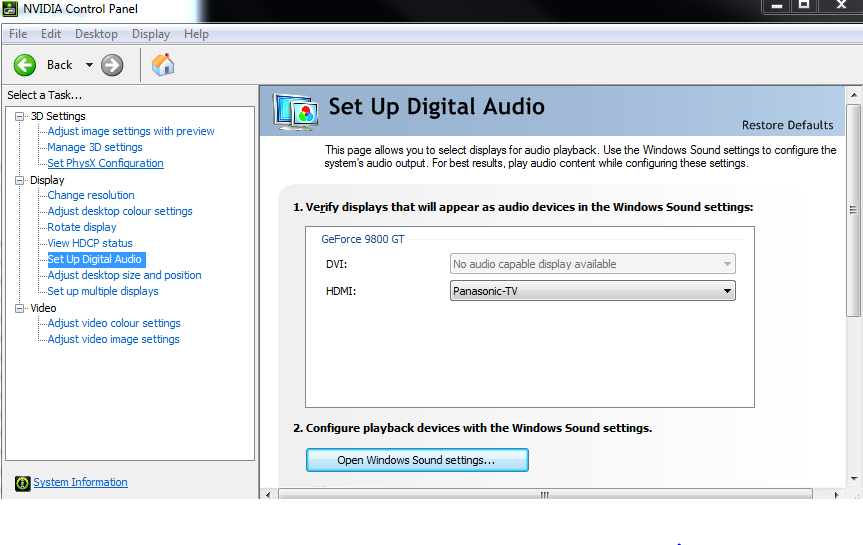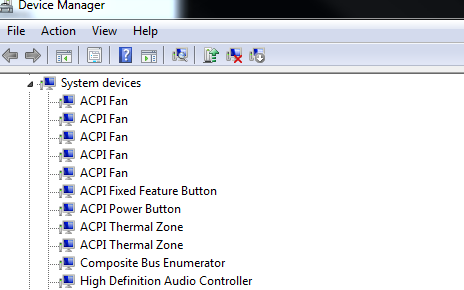One of the best ways to connect your computer to a monitor or TV is through HDMI cable as it takes care of both sound and picture quality. Generally, it is effortless to connect an external display source by just connecting the HDMI cable and selecting the right input/output source. However, there are situations when it does not work as easy as it sounds and you might face issues with HDMI monitor not detected in your Windows 10 PC.

There are a few troubleshooting steps that can be performed to fix the error of display not detected in Windows 10. But if your monitor or TV was working earlier and stopped displaying all of a sudden, then here are a few simple prerequisites that you should take care of:
I don't think HDMI is going to give you any higher resolution. I have a new Dell computer with a 2nd generation Intel chip that gives me the same 1366 x 768 using a 20' LCD monitor via a VGA cable and a 32' TV using HDMI. To get a higher resolution you'd probably need to get a discrete video card and a monitor (or TV) with higher native resolution. Running an outdated graphic driver could also cause your Windows 10 computer not to detect monitors over HDMI. To fix that, update your PC's graphics driver and reboot your computer. Realtek driver for ATI-HDMI and Windows XP 32bit. A complete list of available other device drivers for Realtek ATI-HDMI. On this page, you will find all available drivers listed by release date for the Windows XP 32bit operating system. From the following list, select any driver and try it on your device.
- Microsoft Windows 8.1, 8, 7, XP (32-bit or 63-bit) Mac OS 10.8 to 10.13.3; CPU: Intel i3 Dual Core 1.5 GHZ / Intel Atom 'Bay Trail' Quad Core 1.33 GHZ; RAM: 2 GB or higher; Available USB port (USB 3.0 is recommended) Note for Video Player: Windows XP users: Windows Media Player is recommended for video playback.
- The USB32HDE USB 3.0 to HDMI® Adapter turns an available USB 3.0 port into an HDMI output, with high resolution 1920x1080 (1080p) video support - a convenient external video solution that makes it easy to add multi-monitor capability to a USB 3.0-enabled desktop or laptop computer (optimal performance from USB 3.0, backward compatible with USB 2.0).
- Check if the cable is correctly inserted in PC at one end and the Monitor or TV at the other.
- You can unplug the cable and switch end if both the ports on PC and Monitor are the same.
- Please check if the ports and cable ends are not covered with dust.
- Reboot your computer and monitor or TV.
- Try a second HDMI cable or use this cable on a different TV to make sure that the cable is not faulty.
Also Read: How To Setup Dual Monitors On Windows 10
Best Fixes OnHow To Fix HDMI Monitor Not Detected In Windows 10
If these simple steps do not fix the issue of the monitor not detecting in Windows 10, then you can continue with the fixes mentioned below:
Method 1. Use The Detect Display Option To Connect Any HDMI Monitor Not Detected
Install Hdmi Driver Windows 10
Microsoft has inculcated a Detect Display which can be used to fix any display not detected in Windows 10. This comes in handy, especially when the monitor or TV is of an older make or model and cannot be detected by Plug N Play method. The steps for manual detection of a display device are:
Step 1: Open the Windows Settings Menu by pressing Windows + I and click on System.
Step 2: From the options on the left-hand pane, select Display.
Step 3: Scroll down till you locate the multiple displays section and then, click on the Detect button.
This is a simple method and has worked for many in cases of Windows 10 not detecting HDMI monitor.
Also Read: Fix: AOC USB Monitor Not Working On Windows 10
Method 2.Toggle Between Various Projection Options
Microsoft allows its users to project Windows 10 screen to many different displays with a variety of connectors like VGA, DVI, Mini DisplayPort and HDMI. This can be facilitated by pressing Windows + P shortcut keys on the keyboard and then choosing the right option.
The Project to Second Screen menu can also be brought by typing the keywords in the search box on the left bottom corner. Once you call upon the menu, you will receive the following options:
PC screen only: The first option is generally selected by default, and it is the option that must be selected to resolve any issues of HDMI monitor not detected in Windows 10.
Duplicate: This option replicates the content on all monitors connected.
Extend: This option allows the user to slip the desktop contents between two monitors.
Second screen only: This option is to cast the screen on second display device, mainly a projector. This can be the main reason for display not detected in Windows 10.
Make sure that the first option labelled as PC Screen only is selected so that the display does not reflect any other screens.
Also Read: 5 Best Free Monitor Calibration Software in 2020
Method 3. Update Drivers
Drivers play an essential role when it comes to establishing a connection between the hardware and the software. If you have missing, corrupted or outdated graphic drivers, then this can result in Windows 10 not detecting HDMI monitor. It is easy to update drivers by using the inbuilt driver updater tool:
Free Hdmi Driver Windows 10
Step 1: Press the Windows + R to open the Run box and type “devmgmt.msc” to open the Device Manager.
Step 2: In the new window, locate Display Adapters and make a right-click on your graphics card.
Step 3: From the contextual menu, choose Update Driver.
Step 4: Choose “Search automatically for updated driver software”, and Windows will automatically search the updated driver for you.
If the Windows operating system is unable to find a driver for you, then you can consider using an alternative third-party driver update tool like Smart Driver Care for an automated and guaranteed process that would accomplish within a couple of clicks.
Also Read: How To Fix Color Monitor Problems In Windows OS
Method 4. Modify Graphic Control Properties
The last troubleshooting step to fix HDMI monitor not detecting is to change the graphic settings from the Graphic properties in your system.
Step 1: Make a right-click on any blank space on your desktop and click on Graphics Properties to open the Intel Graphics Control Panel.
Step 2: Choose Display and click on OK.
Step 3: Now search for Display section and click on Multiple displays under it.
Step 4: Click once on the Operating Mode drop-down button and look for your display name.
Note if you have an NVIDIA Graphics card, then download this tool for help with Windows 10 not detecting HDMI monitor. And if you are using AMD instead, then you can download the AMD tool to resolve any display not detected in Windows 10 issue.


Also Read: How to Choose A Gaming Monitor: Things to Keep In Mind
The Final Word On How To Fix HDMI Monitor Not Detected In Windows 10


It can get frustrating if you face display not detected in Windows 10 error and the above four methods can resolve your issue if it is caused by specific misconfigured settings only. For hardware issue, you will have to either replace the device or cables or consult a technician. As per troubleshooting forums, updating the drivers generally fixes a lot of issues in the computer.
Follow us on social media – Facebook and YouTube. For any queries or suggestions, please let us know in the comments section below. We would love to get back to you with a solution. We post regularly on the tips and tricks along with solutions to common issues related to technology.
Suggested Reading:
Responses
